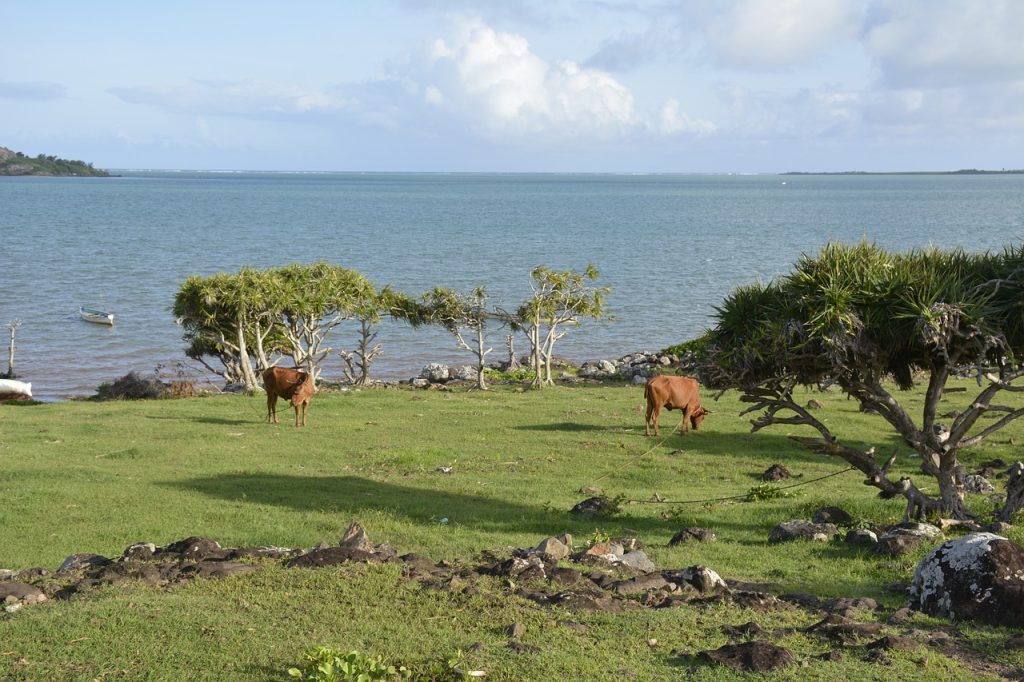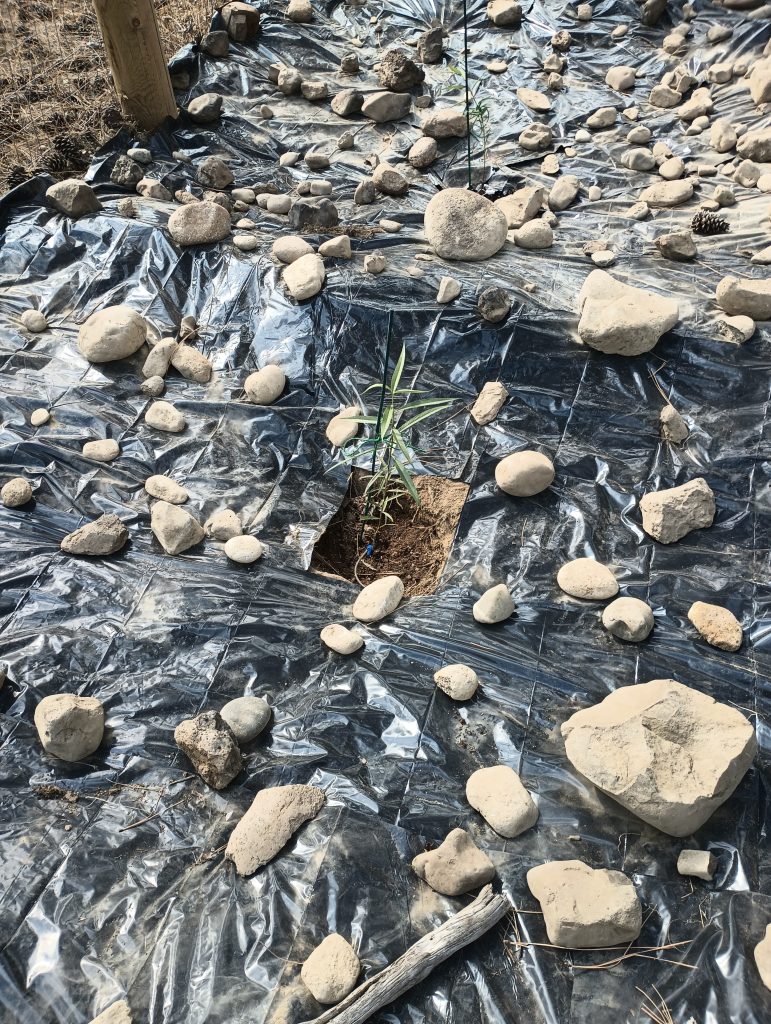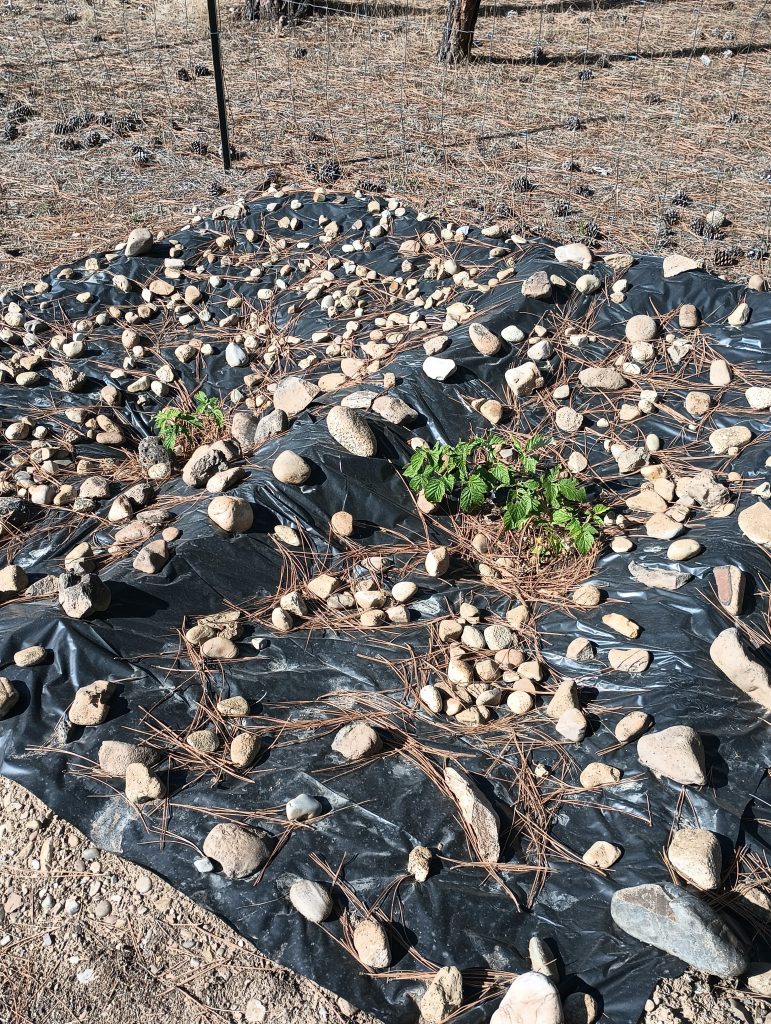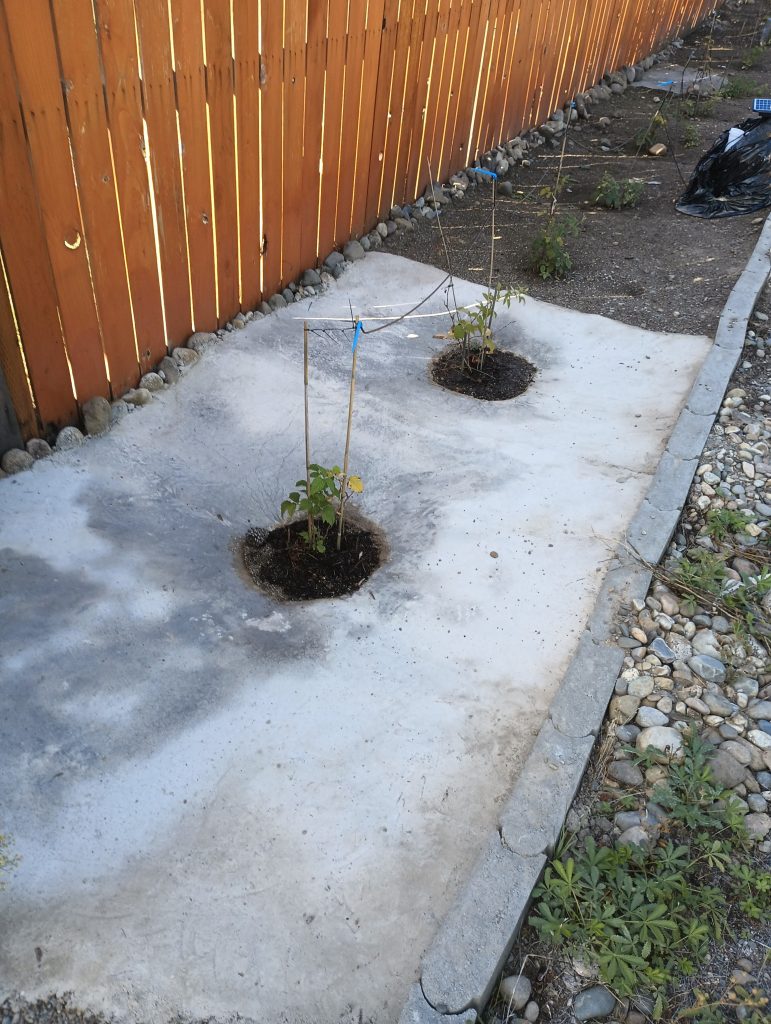In the current climate crisis, small agricultural islands like Rodrigues are grappling with the challenge of sustaining agricultural productivity and preserving freshwater resources. The introduction of innovative water management technologies such as RainAmp S1 could revolutionize this struggle, significantly contributing to food security, economic stability, and environmental conservation. Below, we delve into the multifaceted benefits of RainAmp S1, emphasizing its potential for positive impact in regions experiencing similar challenges, such as Bangladesh.

Water and food challenges made worse by climate change
Agricultural islands like Rodrigues face distinct challenges in water management and food production, often exacerbated by climate change and environmental constraints. With around 1116 mm of annual rainfall, the potential for optimizing water use in Rodrigues is significant. Enter RainAmp S1 technology, a revolutionary approach that could be pivotal in harnessing this rainfall efficiently, profoundly impacting food security, income stability, and the preservation of freshwater lenses.
Maintain fodder availability during drought
The introduction of RainAmp S1 technology on Rodrigues Island promises transformative change. For local farmers, the technology offers a lifeline, particularly for those engaged in animal husbandry, such as goat rearing. By implementing RainAmp, they can maintain fodder availability, even during dry spells, circumventing the need to sell livestock at low prices and repurchase later at higher costs, a cycle that erodes their income stability. This approach could particularly protect farmers who rely on loans for seeds and face potential debt traps if the rains delay or fail.
Improving Infiltration and reducing runoff
RainAmp S1 presents an efficient solution for water utilization in agriculture. Instead of the traditional methods that often lead to runoff and minimal infiltration, this technology enables the soil to absorb and store substantial water volumes, steadily releasing it to the crops. This optimization not only increases agricultural yield but also enhances the quality of food crops and fodder, contributing to food security and economic resilience within the community.

Revitalize Freshwater lens
Beyond agriculture, RainAmp S1 plays a vital role in preserving the island’s freshwater lens. Conventional water management often leads to significant runoff, particularly during heavy rains, with much of this water ending up in the sea, offering little benefit to the land and potentially harming freshwater sources through saltwater intrusion. RainAmp counters this by increasing soil water retention, allowing more rain to seep underground, replenishing vital water sources, and mitigating the risk of saltwater contamination, a significant concern for island environments.
Transform less fertile pasturelands
The technology can benefit the livestock sector by stabilizing pasturelands. Using RainAmp in these areas can transform even the less fertile regions into productive lands, ensuring a reliable fodder supply. This stability is crucial for the local economy, especially in sectors dependent on consistent agricultural output.
Enhancing Resilience while promoting sustainability
The RainAmp S1 technology ensures a reliable water supply, creating a robust defense against climate unpredictability. It also supports sustainable agriculture by reducing dependence on artificial irrigation, thereby cutting associated financial and environmental costs.
Successful integration of technologies like RainAmp S1 requires a comprehensive approach, involving collaboration among local stakeholders, tailoring solutions to respect the local ecosystem, and cultural norms. This strategic process is essential for Rodrigues Island to fully leverage its 1116 mm annual rainfall for sustainable development and climate resilience.
Comparing Rodrigues and Bangladesh
RainAmp’s potential isn’t limited to Rodrigues; similar agricultural communities, such as those in Bangladesh, could also experience profound benefits. By employing RainAmp’s advanced forecasting, farmers can plan their agricultural activities in sync with anticipated weather patterns, safeguarding crops and ensuring investment security. This predictability, combined with improved yields, could mitigate the prevalent debt cycles, preserving land ownership and bolstering economic stability.
RainAmp can be instrumental in food security, making food production more reliable through optimized farming practices. This stability is not just about combating food scarcity; it’s about enabling governmental and non-governmental entities to coordinate interventions effectively, ensuring timely assistance to farmers when necessary.
Agricultural success yields more education
Agricultural stability and success play a pivotal role in enhancing educational opportunities within rural and farming communities. When families and communities thrive agriculturally, they gain economic stability, reducing the pressure on children to assist in labor-intensive tasks. This shift has profound implications for education.
Here’s how this transformative cycle unfolds:
- Reduced Child Labor: With a thriving agricultural sector supported by solutions like RainAmp, families no longer rely on all hands to work the fields, particularly during crises like droughts. Children, instead of toiling on farms, have the opportunity to attend school.
- Increased Financial Resources: Successful farming increases household and community income levels. With more resources, families can afford educational expenses, such as school supplies, uniforms, and transportation.
- Community Investments: Agricultural prosperity can lead to a communal uplift, wherein successful farmers and local agribusinesses invest in public goods, including schools and educational programs. This support further enhances access to quality education.
- Stability and Planning: When families are confident in their agricultural income, they can plan for their children’s future. This stability means educational endeavors are seen as investments in the future rather than expenses they cannot afford.
- Empowerment and Goals: Education becomes a realistic goal and an empowered choice for families thriving in agriculture. Children can aspire for higher education, technical skills, or advanced training, opening doors to diverse career paths, including, but not limited to, agribusiness.
- Multiplier Effect: The benefits extend beyond individual families. As more children gain education, they contribute a broader range of skills and innovations back into their communities, potentially revolutionizing local agriculture further and continuing the cycle of prosperity.
In this way, the success of agriculture, partly ensured by innovations like RainAmp, translates into educational advancement, setting off a chain reaction of community growth, individual opportunity, and generational uplift. Over time, communities become more resilient and adaptive, focusing on long-term strategies for climate change mitigation, from sustainable farming to renewable energy investments.
A holistic approach:
In essence, RainAmp S1 technology could be a cornerstone for addressing the multifaceted challenges faced by agricultural islands like Rodrigues. Its successful implementation hinges on a holistic approach that considers socio-economic factors and environmental conservation, integrating the technology into the community’s fabric. It’s about creating a sustainable future where technology and tradition go hand in hand, empowering communities to thrive in harmony with their natural environment.

Challenges in Agricultural Sustainability and How RainAmp S1 Offers Solutions:
- Inconsistent Rainfall and Water Scarcity:
- Challenge: Erratic weather patterns leading to unpredictable rainfall, causing water scarcity and hampering agricultural productivity.
- RainAmp S1’s role:
- RainAmp supports the cultivation of fodder trees, such as willow, within grassland regions. In circumstances of insufficient rainfall, farmers can leverage RainAmp to maintain these critical resources. This approach prevents the need to sell goats at lower prices during droughts, safeguarding against the economic strain of repurchasing them later at higher costs. Given that local incomes are significantly tied to the value of livestock like goats, maintaining them through drought periods with the help of sustainable fodder could have a transformative impact on financial stability and resilience.
- Maximizes water retention from scarce rainfall, ensuring consistent availability for crops.
- Reduces dependency on unpredictable weather by effectively managing and utilizing collected water.
- RainAmp S1’s role:
- Challenge: Erratic weather patterns leading to unpredictable rainfall, causing water scarcity and hampering agricultural productivity.
- Degradation of Freshwater Resources:
- Challenge: Over-exploitation and inefficient water management practices straining freshwater resources, compounded by saline intrusion.
- RainAmp S1’s role:
- Enhances groundwater recharge through controlled water runoff, preserving freshwater quality.
- Prevents saline water intrusion by maintaining a stable level of freshwater input.
- RainAmp S1’s role:
- Challenge: Over-exploitation and inefficient water management practices straining freshwater resources, compounded by saline intrusion.
- Economic Instability due to Crop Failure:
- Challenge: Frequent crop failures due to water shortages, leading to economic hardship for farming communities.
- RainAmp S1’s role:
- Ensures a consistent water supply, promoting healthy crop cycles and increasing yield predictability.
- Supports economic stability for farmers, reducing the risk of debt cycles due to crop failure.
- Small-scale farmers are often trapped in a cycle of debt, relying on borrowed funds for seasonal seed purchases. Their livelihoods hinge on timely rainfall, without which their entire investment can be lost, jeopardizing both the current year’s income and their future financial stability.
Persistent rainfall delays or inadequate seasonal showers intensify this precarious situation. Each instance of crop failure not only increases their debt but also heightens the risk of losing their most valuable asset: their land. This loss isn’t merely financial but also deeply personal, stripping them of their heritage and often their community ties.
Repeated failures can lead to the dire consequence of land sale, pushing these farmers into extreme poverty from which recovery is exceptionally challenging. It impacts every aspect of their lives, from basic survival to access to healthcare and education for their families.
Solutions like RainAmp, offering more dependable agricultural outcomes, are crucial in breaking this cycle of debt and uncertainty, providing these farmers with much-needed stability and safeguarding their way of life.
- RainAmp S1’s role:
- Challenge: Frequent crop failures due to water shortages, leading to economic hardship for farming communities.
- Environmental Degradation:
- Challenge: Traditional agricultural practices contributing to soil erosion, loss of biodiversity, and ecosystem imbalance.
- RainAmp S1’s role:
- Promotes sustainable farming methods that maintain soil health, reduce erosion, and encourage biodiversity.
- Supports the balance of natural ecosystems by utilizing environmentally friendly water management practices.
- RainAmp’s innovative system is a boon to water conservation, essential for small farmers and island communities. By capturing the initial rainwater to replenish the bio-sponge and then storing the excess, the technology ensures every drop is utilized. Beyond immediate usage, surplus water significantly contributes to the underground freshwater lens, critical for island sustainability.
The method’s real potential shines when implemented widely across diverse farms. Just imagine: hundreds of thousands of trees, each saving gallons of water. This mass conservation effort can substantially increase the volume of the freshwater lens, sometimes by millions of gallons annually, depending on the region and rainfall.
This approach is not just about conservation but the preservation of island life. A stable freshwater lens prevents saltwater intrusion, an issue threatening the delicate balance of island ecosystems. By maintaining the freshwater balance, RainAmp helps sustain agricultural practices, local biodiversity, and the very cultural fabric of island communities, ensuring they continue to thrive for generations. This adaptability, even in varied topographies, underscores RainAmp’s value in sustainable water management.
- RainAmp S1’s role:
- Challenge: Traditional agricultural practices contributing to soil erosion, loss of biodiversity, and ecosystem imbalance.
- Limited Agricultural Diversity:
- Challenge: Dependence on a narrow range of crops due to water constraints, limiting economic opportunities and dietary diversity.
- RainAmp S1’s role:
- Allows for the cultivation of a more diverse set of crops by ensuring water availability.
- Enhances food security and nutrition while providing economic diversification for farming communities.
- RainAmp S1’s role:
- Challenge: Dependence on a narrow range of crops due to water constraints, limiting economic opportunities and dietary diversity.
Potential of RainAmp S1 in Global Contexts: Similarities with Bangladesh
Understanding the universal applicability of RainAmp S1 requires drawing parallels between Rodrigues and other regions facing agricultural and environmental challenges, such as Bangladesh.
- Shared Challenges and Solutions:
- Both Rodrigues and Bangladesh grapple with agricultural productivity due to climatic stressors and water management issues.
- RainAmp S1’s consistent water supply could mitigate the impacts of climatic uncertainties on agriculture, thereby enhancing food security and economic stability in both regions.
- Both Rodrigues and Bangladesh grapple with agricultural productivity due to climatic stressors and water management issues.
- Broader Implications for Community and Environmental Well-being:
- The successful implementation of RainAmp S1 could transcend agricultural benefits, leading to community empowerment, educational advancements, and long-term environmental sustainability.
Conclusion: The deployment of RainAmp S1 technology represents a beacon of hope for regions battling the harsh consequences of climate change on agriculture. By addressing core challenges such as water scarcity, economic instability, and environmental degradation, RainAmp S1 stands as a pivotal solution for sustainable agricultural practices. Its potential success in Rodrigues could serve as a global model, inspiring a worldwide movement towards resilient, self-sustaining communities harmonized with nature.
Keywords: RainAmp S1, Rodrigues, sustainable agriculture, climate resilience, water management technology, food security, environmental preservation, Bangladesh, global applicability, community empowerment.

Transformative solution for water conservation
RainAmp’s innovative system presents a transformative solution for water conservation, particularly beneficial for small farmers, by efficiently harnessing and managing rainfall. Here’s how it makes a significant difference, especially in regions with variable topographies:
- Optimal Water Utilization: The initial runoff from each rainfall isn’t wasted but is strategically directed to rejuvenate the bio-sponge. Following this, the subsequent flow prioritizes refilling the storage barrel. This systematic approach ensures the first, often crucial, inches of rain are retained within the farmer’s land, contributing directly to agricultural productivity.
- Groundwater Recharge: Post-storage saturation, excess rainwater permeates the soil, a process that gradually replenishes the underground freshwater lens. While this incremental contribution might appear minimal in isolation, it’s monumental in scope when replicated over extensive areas. On islands receiving significant annual rainfall, imagine this methodology employed across countless trees spanning thousands of farms; the collective water conservation and contribution to the aquifer can be substantial.
- Versatility Across Landscapes: RainAmp stands out in its adaptability, offering a practical solution irrespective of the terrain’s gradient. Be it sloping hillsides or level grounds, the system is designed to operate efficiently without the necessity for substantial alterations to the landscape. This feature is particularly advantageous as it negates the need for constructing large, often disruptive, dams in ecologically sensitive riparian zones along streams and rivers.
- Environmental and Community Impact: Beyond immediate water management, this technique presents broader environmental benefits. By circumventing the need for imposing dams, it preserves natural watercourses, sustaining the biodiversity within these crucial ecosystems. Concurrently, it bolsters community resilience by promoting water security, supporting agriculture, the primary livelihood for these regions, thereby contributing to regional food security and economic stability.
By focusing on these practical and ecological aspects, RainAmp positions itself not just as a temporary fix but a sustainable water management solution, promoting ecological balance, and offering a lifeline to small-scale farmers globally.
References:
- Perception of Climate Change Adaptation in Rodrigues Island Marie Stephania Perrine, MPhil candidate at the Islands and Small States (ISS) at the University of Malta and UNFCCC Capacity Fellow at the UN Secretariat for Climate Change in Bonn, Germany. Sep-5-2023
- CLIMATE-SMART AGRICULTURE IN MAURITIUS Jan 1 2017 Policy Brief
- Transformative power of food production in Mauritius: A UN Resident Coordinator blog Lisa Singh, who is the UN Resident Coordinator in Mauritius and Seychelles Jul-23-2023